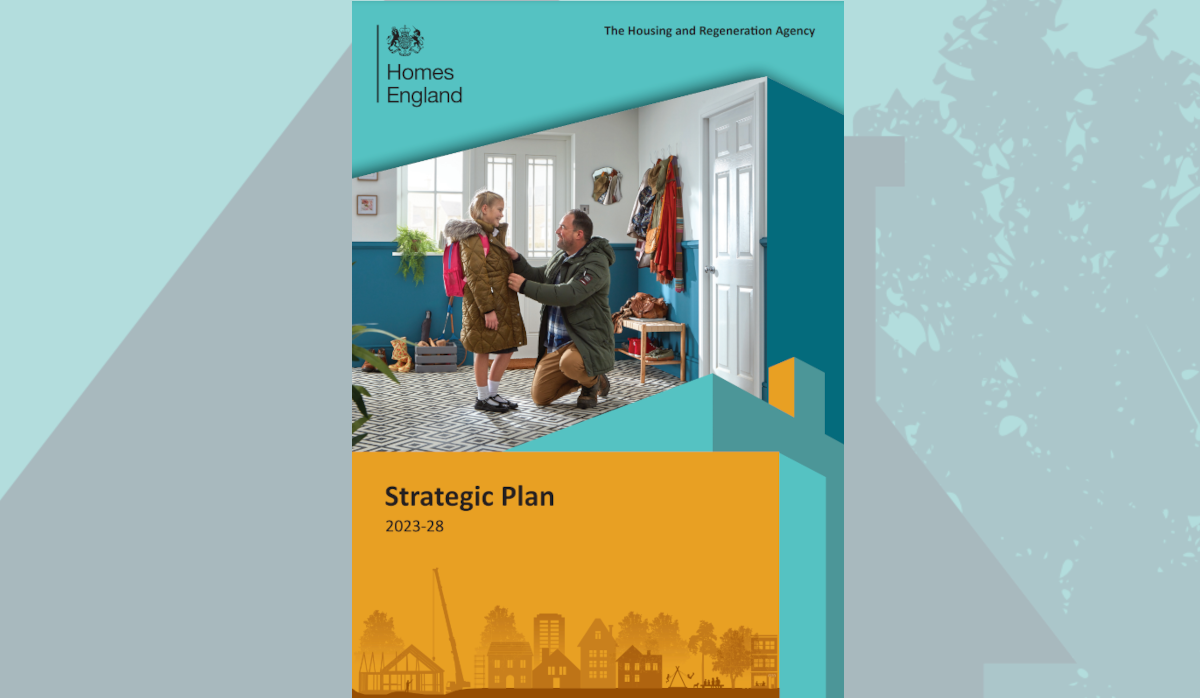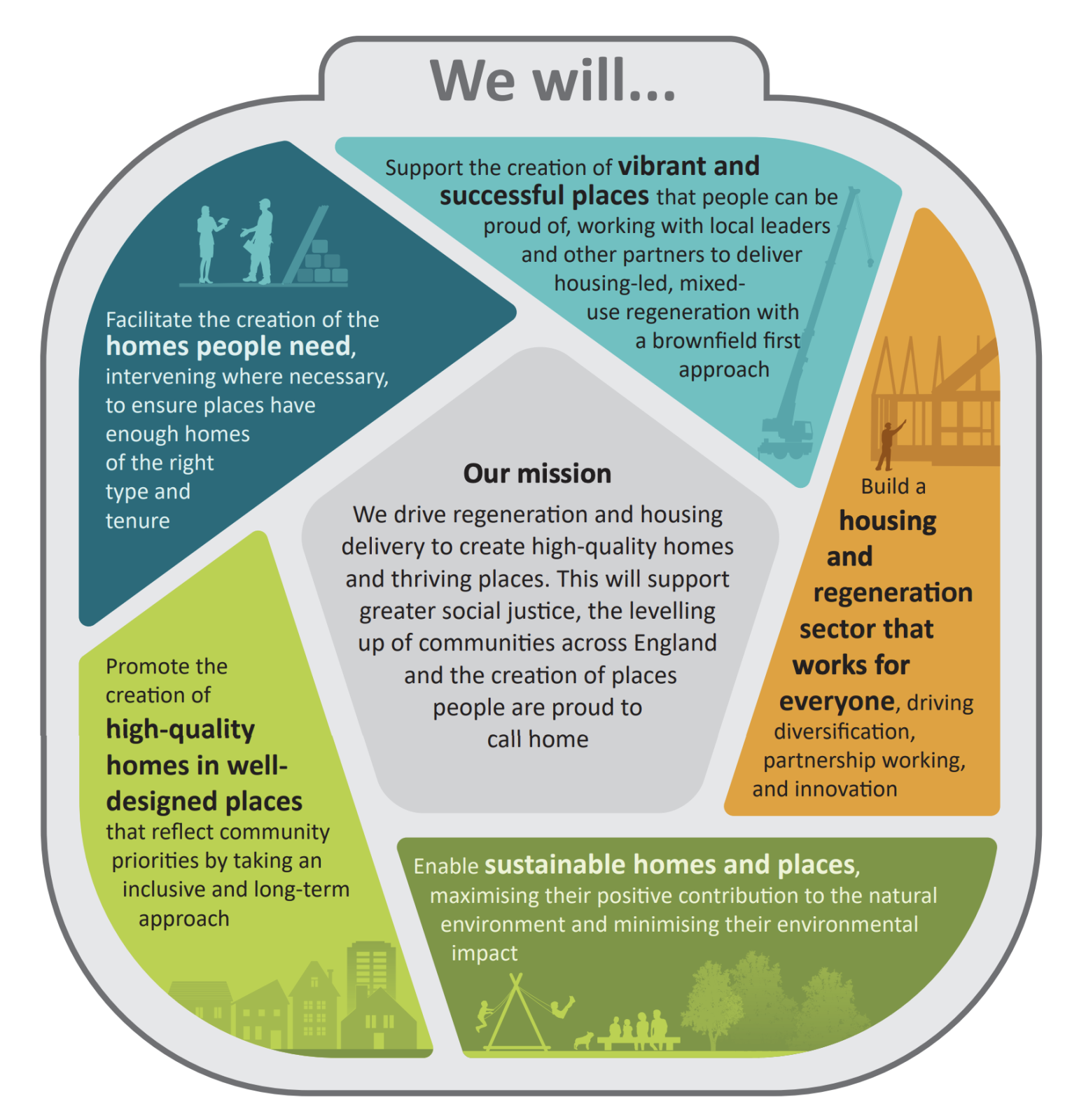Homes England, the government’s housing and regeneration agency has published its five year vision in a new strategic plan.
The 56 page document sets out how the agency plans to deliver its place-based objectives to create high-quality homes in well-designed places, in line with the government’s Levelling Up White Paper.
Going beyond housing, the strategy marks a return to the original ambition for the agency to support communities, especially around regeneration and renewal. As part of this it is placing greater emphasis on quality, decency, good design and sustainability of the built environment.
To help deliver its vision Homes England is backed by £16 billion of combined capital spend split between loans, grants, equity and guarantees, as well as owning over 9,000 hectares of land.
The Agency’s revitalised mission is underpinned by five objectives, three focused on places, homes and the wider sector, while the final two frame its commitment to a partnership approach.
NaCSBA welcomes the reiteration in the strategy of Homes’ England’s commitment to custom and self build and the SME housebuilders that deliver these homes. This is through the commitment to Help to Build and the establishment of a dedicated unit to support owner commissioned homes, as recommended by the Bacon Review. The strategy states that, ‘The (housing) sector also needs greater competition, diversity and innovation to disrupt the market,’ a necessary precursor to a housing and regeneration sector that works for everyone.
Chair of Homes England, Peter Freeman, said: “There is no doubt that housing plays an enormous role in the wellbeing and prosperity of our country. As an Agency, we firmly believe that affordable, quality homes in well-designed places are key to improving people’s lives. And our updated strategic plan has been designed to enable us to deliver against that.
Over the next five years, we will continue to work with housebuilders of all shapes and sizes to boost housing supply. But we will also focus on the places those homes sit in, working ever more closely with local leaders and other partners to build communities as well as housing, be it through housing-led, mixed-use regeneration or new settlements.”




